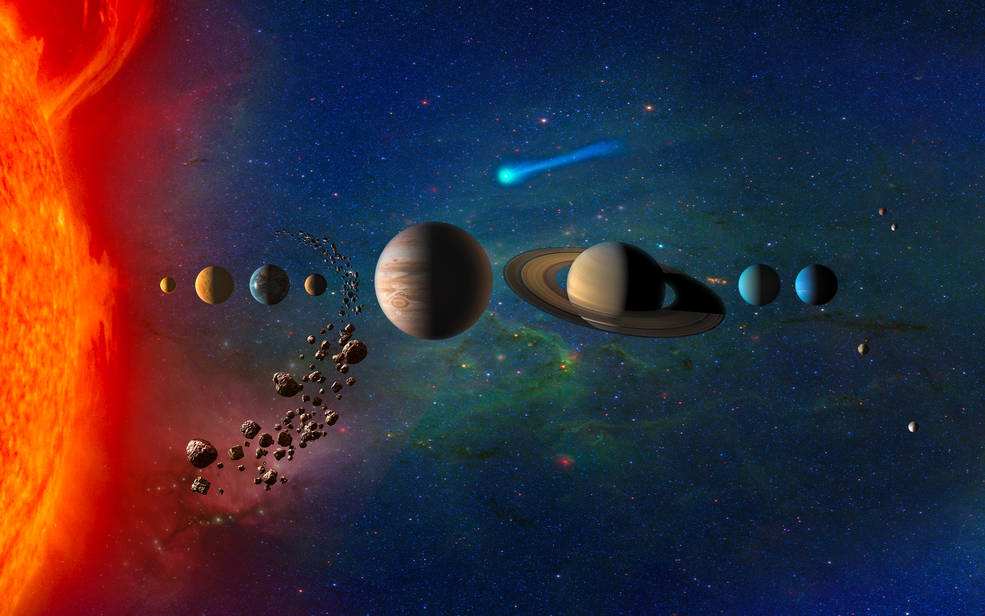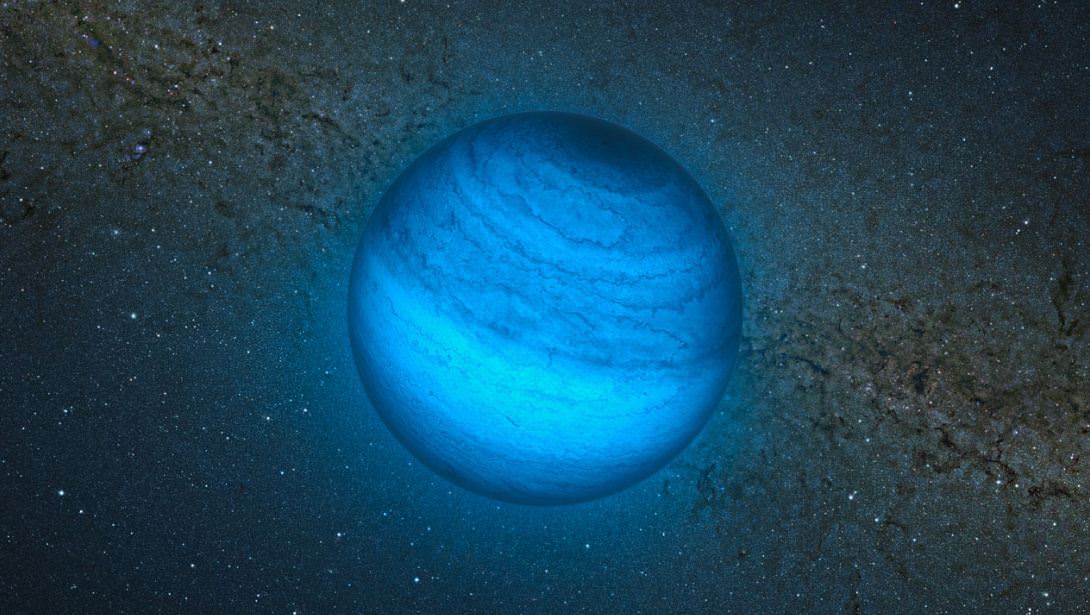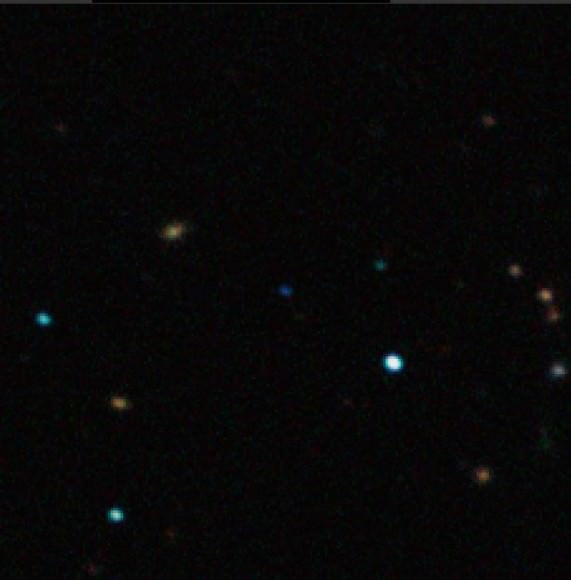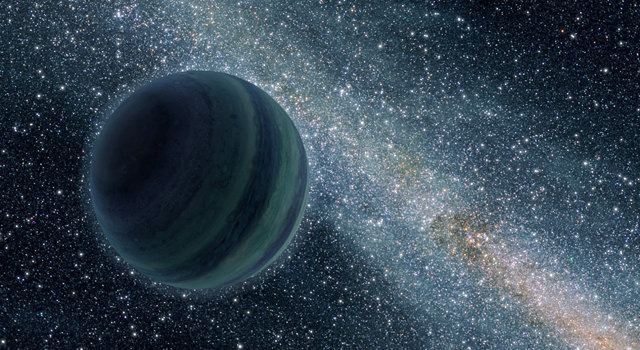Last year we reported on how the Roman Space Telescope’s backers hoped it would be able to detect rogue planets using a technique called “microlensing”. Now, a team led by Iain McDonald, then at the University of Manchester, beat them to the punch by finding a few examples of Earth-sized rogue planets using data from an already aging space telescope – Kepler.
Continue reading “Multiple Earth-Mass Rogue Planets Have Been Discovered Drifting Through the Milky Way”The Moons of Rogue Planets Could Have Liquid Surface Water and Thick Atmospheres. They Could be Habitable

The search for life on exoplanets takes a fairly conservative approach. It focuses on life that is similar to that of Earth. Sure, it’s quite possible that life comes in many exotic forms, and scientists have speculated about all the strange forms life might take, but the simple fact is that Earth life is the only form we currently understand. So most research focuses on life forms that, like us, are carbon based with a biology that relies on liquid water. But even with that narrow view, life could still be hiding in places we don’t expect.
Continue reading “The Moons of Rogue Planets Could Have Liquid Surface Water and Thick Atmospheres. They Could be Habitable”In the Far Future, Stellar Flybys Will Completely Dismantle the Solar System
Consumption and disintegration.
Next time you want to be the life of the party—if you’re hanging out with cool nerds that is—just drop that phrase into the conversation. And when they look at you quizzically, just say that’s the eventual fate of the Solar System.
Then adjust your cravat and take another sip of your absinthe.
Continue reading “In the Far Future, Stellar Flybys Will Completely Dismantle the Solar System”A Rogue Earth-Mass Planet Has Been Discovered Freely Floating in the Milky Way Without a Star

If a solar system is a family, then some planets leave home early. Whether they want to or not. Once they’ve left the gravitational embrace of their family, they’re pretty much destined to drift through interstellar space forever, unbound to any star.
Astronomers like to call these drifters “rogue planets,” and they’re getting better at finding them. A team of astronomers have found one of these drifting rogues that’s about the same mass as Mars or Earth.
Continue reading “A Rogue Earth-Mass Planet Has Been Discovered Freely Floating in the Milky Way Without a Star”Planetary Mass Objects Discovered in Other Galaxies
A team of researchers at the University of Oklahoma have discovered “planetary mass bodies” outside of the Milky Way. They were discovered in one gravitationally-lensed galaxy, and in one gravitationally-lensed galaxy cluster using a technique called quasar micro-lensing. According to the researchers, the planetary mass objects are either planets or primordial black holes.
Continue reading “Planetary Mass Objects Discovered in Other Galaxies”Is it a Massive Planet or a Tiny Brown Dwarf. This Object is Right at the Border Between Planet and Star
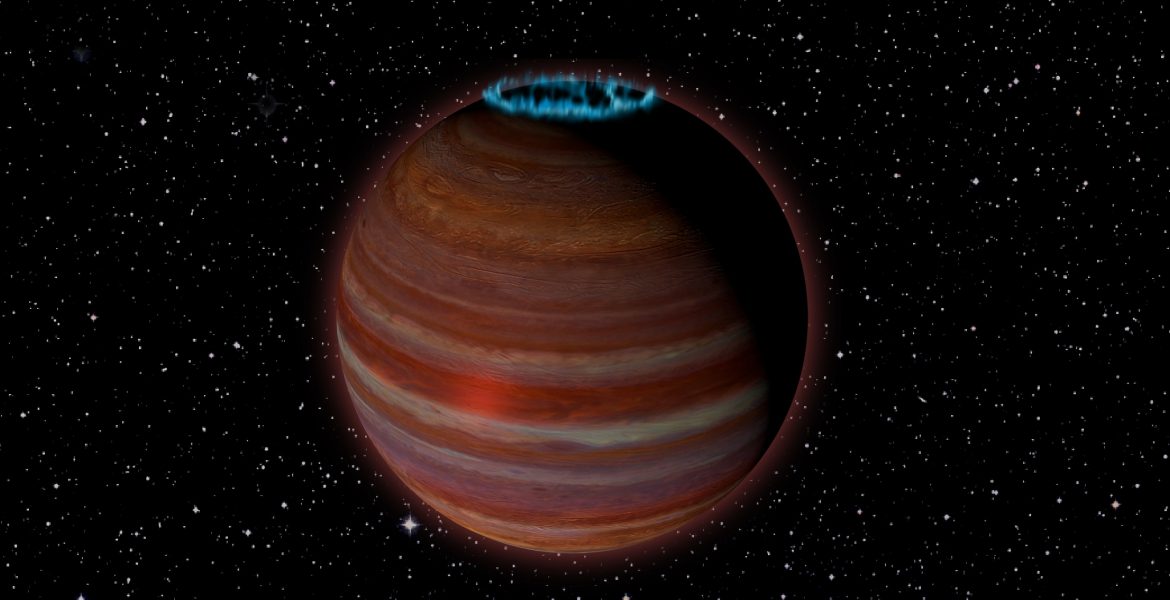
Rogue planets are a not-too-uncommon occurrence in our Universe. In fact, within our galaxy alone, it is estimated that there are billions of rogue planets, perhaps even more than there are stars. These objects are basically planet-mass objects that have been ejected from their respective star systems (where they formed), and now orbit the center of the Milky Way. But it is especially surprising to find one orbiting so close to our own Solar System!
In 2016, scientists detected what appeared to be either a brown dwarf or a star orbiting just 20 light years beyond our Solar System. However, using the National Science Foundation’s Karl G. Jansky Very Large Array (VLA), a team of astronomers recently concluded that it is right at the boundary between a massive planet and a brown dwarf. This, and other mysterious things about this object, represent a mystery and an opportunity to astronomers!
The study which describes their findings recently appeared the Astrophysical Journal under the title “The Strongest Magnetic Fields on the Coolest Brown Dwarfs.” The team was led by Melodie Kao – who led this study while a graduate student at Caltech, and is now a Hubble Postdoctoral Fellow at Arizona State University – and included members from Arizona State University, the University of Colorado Boulder, the California Institute of Technology, and the University of California San Diego.
To summarize, brown dwarfs are objects that are too massive to be considered planets, but not massive enough to become stars. Originally, such objects were not thought to emit radio waves, but in 2001, a team using the VLA discovered a brown dwarf that exhibited both strong radio emissions and magnetic activity. Ongoing observations also revealed that some brown dwarfs have strong auroras, similar to the gas giants in our Solar System.
This particular object, known as SIMP J01365663+0933473, was first discovered in 2016 by the Caltech team as one of five brown dwarfs. This survey was part of VLA study to gain new knowledge about magnetic fields and the mechanisms by which the coolest astronomical objects can produce strong radio emissions. Since brown dwarfs are incredibly difficult to measure, the object was initially though to be too old and too massive to be a brown dwarf.
However, last year, an independent team of scientists discovered that SIMP J01365663+0933473 was part of a very young group of stars whose age, size and mass indicated that it was likely to be a free-floating (aka. rogue) planet rather than a star. In short, the object was determined to be 200 million years old, 1.22 times the radius of Jupiter and 12.7 times its mass.
It was also estimated to have a surface temperature of about 825 °C (1500 °F) – compared to the Sun’s, which is 5,500 °C (9932 °F). Simultaneously, the Caltech team that originally detected its radio emission in 2016 observed it again in a new study at even higher radio frequencies. From this, they confirmed that its magnetic field was even stronger than first measured, roughly 200 times stronger than Jupiter’s.
As Dr. Kao explained in a recent NRAO press release, this all presents a rather mysterious find:
“This object is right at the boundary between a planet and a brown dwarf, or ‘failed star,’ and is giving us some surprises that can potentially help us understand magnetic processes on both stars and planets… When it was announced that SIMP J01365663+0933473 had a mass near the deuterium-burning limit, I had just finished analyzing its newest VLA data.”
In short, the VLA observations provided both the first radio detection and the first measurement of the magnetic field of a planetary-mass object beyond our Solar System. The presence of a such a strong magnetic field represents a huge challenge to astronomers’ understanding of the dynamo mechanisms that create magnetic fields in brown dwarfs, not to mention the mystery of what drives their auroras.
Ever since brown dwarfs were observed to have auroral activity, scientists have wondered what could be powering them. On Earth, as with Jupiter and the other Solar planets that experience them, aurorae are the result of solar wind interacting with a planet’s magnetic field. But in the case of brown dwarfs, which have no parent star, some other mechanism must be involved. As Kao explained:
“This particular object is exciting because studying its magnetic dynamo mechanisms can give us new insights on how the same type of mechanisms can operate in extrasolar planets — planets beyond our Solar System. We think these mechanisms can work not only in brown dwarfs, but also in both gas giant and terrestrial planets.”
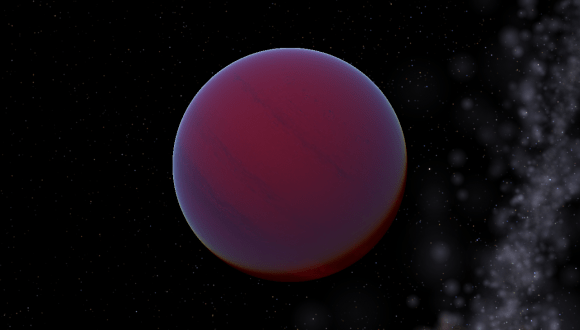
Kao and her team think that one possibility is that this object has an orbiting planet or moon that is interacting with its magnetic field, similar to what happens between Jupiter and its moon Io. Given its proximity to our Solar System, scientists will have the opportunity to address this and other questions, and to learn a great deal about the mechanics that power gas giants and brown dwarfs.
Studying this object will also help astronomers place more accurate constraints on the dividing line between massive planets and brown dwards. And last, but not least, it also presents new opportunities as far exoplanet research is concerned. As Gregg Hallinan, who was Dr. Kao’s advisor and a co-author on the Caltech study, explained:
“Detecting SIMP J01365663+0933473 with the VLA through its auroral radio emission also means that we may have a new way of detecting exoplanets, including the elusive rogue ones not orbiting a parent star.”
Between finding planets that orbit distant stars to planetary-mass objects that orbit the center of the Milky Way, astronomers are making exciting discoveries that are pushing the boundaries of what we know about planetary formation and the different types that can exist. And with next-generation instruments coming online, they plan to learn a great deal more!
Further Reading: NRAO, The Astrophysical Journal
Rogue Planets Could Form On Their Own in Interstellar Space
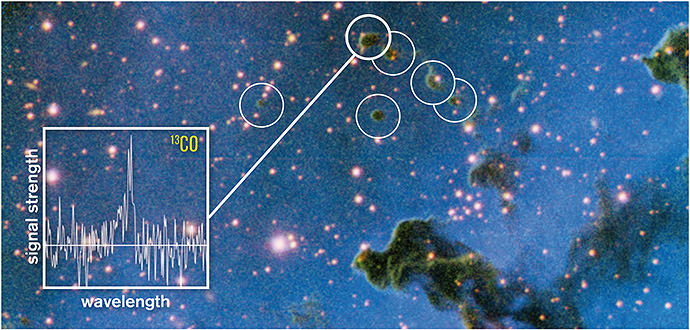
Free-floating rogue planets are intriguing objects. These planet-sized bodies adrift in interstellar space were predicted to exist in 1998, and since 2011 several orphan worlds have finally been detected. The leading theory on how these nomadic planets came to exist is that they were they ejected from their parent star system. But new research shows that there are places in interstellar space that might have the right conditions to form planets — with no parent star required.
Astronomers from Sweden and Finland have found tiny, round, cold clouds in space that may allow planets to form within, all on their own. In a sense, planets could be born free.
Continue reading “Rogue Planets Could Form On Their Own in Interstellar Space”
New Rogue Planet Found, Closest to our Solar System
This artist’s impression shows the free-floating planet CFBDSIR J214947.2-040308.9. Credit: ESO/L. Calçada/P. Delorme/Nick Risinger/R. Saito/VVV Consortium
Rogue planets – also known as free floating planets – are pretty intriguing. They are not orbiting a star but instead are wandering through the galaxy, having been either forcibly ejected from a solar system or having formed very early on in the Universe. While only a handful of these planets have been actually found, astronomers estimate these vagrant worlds could vastly outnumber stars. In fact, it’s been suggested there could be 100,000 times more rogue planets than stars in our Milky Way galaxy alone!
The latest rogue world to be found is exciting in that it is the closest such object to our Solar System so far. At a distance of about 100 light-years, its comparative proximity, along with the absence of a bright star very close to it, has allowed the team to study its atmosphere in great detail. Astronomers say this object gives them a preview of the exoplanets that future instruments will be able to find – and potentially take image of — around stars other than the Sun. But the planet also seems to be loosely tied to a roving group of stars, called the AB Doradus Moving Group.
The new rogue planet, with the ungainly name of CFBDSIR J214947.2-040308.9 (CFBDSIR2149 for short), was found using the Very Large Telescope and the Canada-France-Hawaii Telescope. The astronomers, led by Philippe Delorme from the Institut de planétologie et d’astrophysique de Grenoble, CNRS/Université Joseph Fourier, France, are calling the object a rogue planet candidate for now, as they want to study it further to confirm its free-floating status.
Moving star systems are equally intriguing. The AB Doradus Moving Group is the closest such group to our Solar System, and the stars drift through space together in a pack. They are thought to have formed at the same time. If the new rogue planet actually is associated with this moving group, astronomers say it will be possible to deduce much more about it, including its temperature, mass, and what its atmosphere is made of. There remains a small probability that the association with the moving group is by chance.
The link between the new object and the moving group is the vital clue that allows astronomers to find the age of the newly discovered object. Without knowing its age, it’s not possible to know whether it is really a planet, or a brown dwarf, a “failed” star that lack the bulk to trigger the reactions that make stars shine.
This is the first isolated planetary mass object ever identified in a moving group, and the association with this group makes it the most interesting free-floating planet candidate identified so far.
This closeup of an image captured by the SOFI instrument on ESO’s New Technology Telescope at the La Silla Observatory shows the free-floating planet CFBDSIR J214947.2-040308.9 in infrared light. This object, which appears as a faint blue dot at the centre of the picture, is the closest such object to the Solar System. Credit: ESO/P. Delorme.
“Looking for planets around their stars is akin to studying a firefly sitting one centimetre away from a distant, powerful car headlight,” said Delorme. “This nearby free-floating object offered the opportunity to study the firefly in detail without the dazzling lights of the car messing everything up.”
Free-floating objects like CFBDSIR2149 are thought to form either as normal planets that have been booted out of their home systems, or as lone objects like the smallest stars or brown dwarfs. In either case these objects are intriguing — either as planets without stars, or as the tiniest possible objects in a range spanning from the most massive stars to the smallest brown dwarfs.
“These objects are important, as they can either help us understand more about how planets may be ejected from planetary systems, or how very light objects can arise from the star formation process,” says Philippe Delorme. “If this little object is a planet that has been ejected from its native system, it conjures up the striking image of orphaned worlds, drifting in the emptiness of space.”
If CFBDSIR2149 is not associated with the AB Doradus Moving Group, the astronomers say it is trickier to be sure of its nature and properties, and it may instead be characterized as a small brown dwarf. Both scenarios represent important questions about how planets and stars form and behave.
“Further work should confirm CFBDSIR2149 as a free-floating planet,” said Delorme. “This object could be used as a benchmark for understanding the physics of any similar exoplanets that are discovered by future special high-contrast imaging systems, including the SPHERE instrument that will be installed on the VLT.”
This video shows an artist’s impression of the free-floating planet CFBDSIR J214947.2-040308.9. In the first part of the sequence the planet appears as a dark disc in visible light, silhouetted against the star clouds of the Milky Way. This is the closest such object to the Solar System and the most exciting candidate free-floating planet found so far. It does not orbit a star and hence does not shine by reflected light; the faint glow it emits can only be detected in infrared light. In the final sequence we see an infrared view of the object with the central parts of the Milky Way as seen by the VISTA infrared survey telescope as background. The object appears blueish in this near-infrared view because much of the light at longer infrared wavelengths is absorbed by methane and other molecules in the planet’s atmosphere. In visible light the object is so cool that it would only shine dimly with a deep red colour when seen close-up.
Read the team’s research paper here (pdf).
Source: ESO
Worlds Without Suns: Nomad Planets Could Number In The Quadrillions
[/caption]
The concept of nomad planets has been featured before here on Universe Today, and for good reason. Not only is the idea of mysterious lone planets drifting sunless through interstellar space an intriguing one, but also the sheer potential quantity of such worlds is simply staggering. If some very well-respected scientists’ calculations are correct there are more nomad planets in our Milky Way galaxy than there are stars — a lot more. With estimates up to 100,000 nomad planets for every star in the galaxy, there could be literally quadrillions of wandering worlds out there, ranging in size from Pluto-sized to even larger than Jupiter.
That’s a lot of nomads. But where did they all come from?
Recently, The Kavli Foundation had a discussion with several scientists involved in nomad planet research. Roger D. Blandford, Director of the Kavli Institute for Particle Astrophysics and Cosmology (KIPAC) at Stanford University, Dimitar D. Sasselov, Professor of Astronomy at Harvard University and Louis E. Strigari, Research Associate at KIPAC and the SLAC National Accelerator Laboratory talked about their findings and what sort of worlds these nomad planets might be, as well as how they may have formed.
One potential source for nomad planets is forceful ejection from solar systems.
“Most stars form in clusters, and around many stars there are protoplanetary disks of gas and dust in which planets form and then potentially get ejected in various ways,” said Strigari. “If these early-forming solar systems have a large number of planets down to the mass of Pluto, you can imagine that exchanges could be frequent.”
And the possibility of planetary formation outside of stellar disks is not entirely ruled out by the researchers — although they do impose a lower limit to the size of such worlds.
“Theoretical calculations say that probably the lowest-mass nomad planet that can form by that process is something around the mass of Jupiter,” said Strigari. “So we don’t expect that planets smaller than that are going to form independent of a developing solar system.”
“This is the big mystery that surrounds this new paper. How do these smaller nomad planets form?” Sasselov added.
Of course, without a sun of their own to supply heat and energy one might assume such worlds would be cold and inhospitable to life. But, as the researchers point out, that may not always be the case. A nomad planet’s internal heat could supply the necessary energy to fuel the emergence of life… or at least keep it going.
“If you imagine the Earth as it is today becoming a nomad planet… life on Earth is not going to cease,” said Sasselov. “That we know. It’s not even speculation at this point. …scientists already have identified a large number of microbes and even two types of nematodes that survive entirely on the heat that comes from inside the Earth.”
Researcher Roger Blandford also suggested that “small nomad planets could retain very dense, high-pressure ‘blankets’ around them. These could conceivably include molecular hydrogen atmospheres or possibly surface ice that would trap a lot of heat. They might be able to keep water liquid, which would be conducive to creating or sustaining life.”
And so with all these potentially life-sustaining planets knocking about the galaxy, is it possible that they could have helped transport organisms from one solar system to another? It’s a concept called panspermia, and it’s been around since at least the 5th century BCE when the Greek philosopher Anaxagoras first wrote about it. (We’ve written about it too, as recently as three weeks ago, and it’s still a much-debated topic.)
“In the 20th century, many eminent scientists have entertained the speculation that life propagated either in a directed, random or malicious way throughout the galaxy,” said Blandford. “One thing that I think modern astronomy might add to that is clear evidence that many galaxies collide and spray material out into intergalactic space. So life can propagate between galaxies too, in principle.
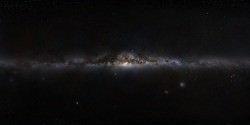
“And so it’s a very old speculation, but it’s a perfectly reasonable idea and one that is becoming more accessible to scientific investigation.”
Nomad planets may not even be limited to the confines of the Milky Way. Given enough of a push, they could be sent out of the galaxy entirely.
“Just a stellar or black hole encounter within the galaxy can, in principle, give a planet the escape velocity it needs to be ejected from the galaxy. If you look at galaxies at large, collisions between them leads a lot of material being cast out into intergalactic space,” Blandford said.
The discussion is a fascinating one and can be found in its entirety on The Kavli Foundation’s site here, and watch a recorded interview between Louis Strigari and journalist Bruce Lieberman here.
The Kavli Foundation, based in Oxnard, California, is dedicated to the goals of advancing science for the benefit of humanity and promoting increased public understanding and support for scientists and their work.
Rogue Planets Could Drive By And Scoop Up Life

[/caption]
Free-floating “rogue” planets may occasionally dip into the inner Solar System, picking up dust containing organic compounds — a.k.a. the ingredients for life — and carry it back out into the galaxy, according to new research by Professor Chandra Wickramasinghe, Director of the University of Buckingham Centre for Astrobiology in the UK.
Rogue planets are thus called because they are not in orbit around a star. Either forcibly ejected from a solar system or having formed very early on in the Universe — even within a few million years after the Big Bang, the team proposes — these vagrant worlds may vastly outnumber stars. In fact, it’s been suggested there are as much as 100,000 times more rogue planets than stars in our Milky Way galaxy alone!
Read: Rogue Planets Can Find Homes Around Other Stars
Professor Wickramasinghe — a proponent of the panspermia hypothesis whereby the ingredients for life can be transported throughout the galaxy on dust, comets, and perhaps even planets — and his team have suggested in a paper published in the journal Astrophysics and Space Science that Earth-sized rogue planets could pass through the inner Solar System, possibly as often as once every 25 million years on average. Like a cosmic drive-thru these planets could gather zodiacal dust from the plane of the Solar System during their pass, thus picking up organic compounds along the way.
The planets would then take the material gathered from one solar system and possibly bring it into another, serving as a type of interstellar cross-pollinator.
Wickramasinghe’s team propose that, by this process, there could be more life-bearing, Earth-sized planets existing between the stars than orbiting around them — a lot more. Based on their estimates there may be as much as a few hundred thousand billion such worlds in our galaxy… that’s several thousand for every star.
It will be interesting to see how this idea is received, but it definitely is an intriguing concept. As we hunt for the “Holy Grail” of life-friendly exoplanets around other stars, they may be drifting through the darkness in number, hiding in the spaces between.


